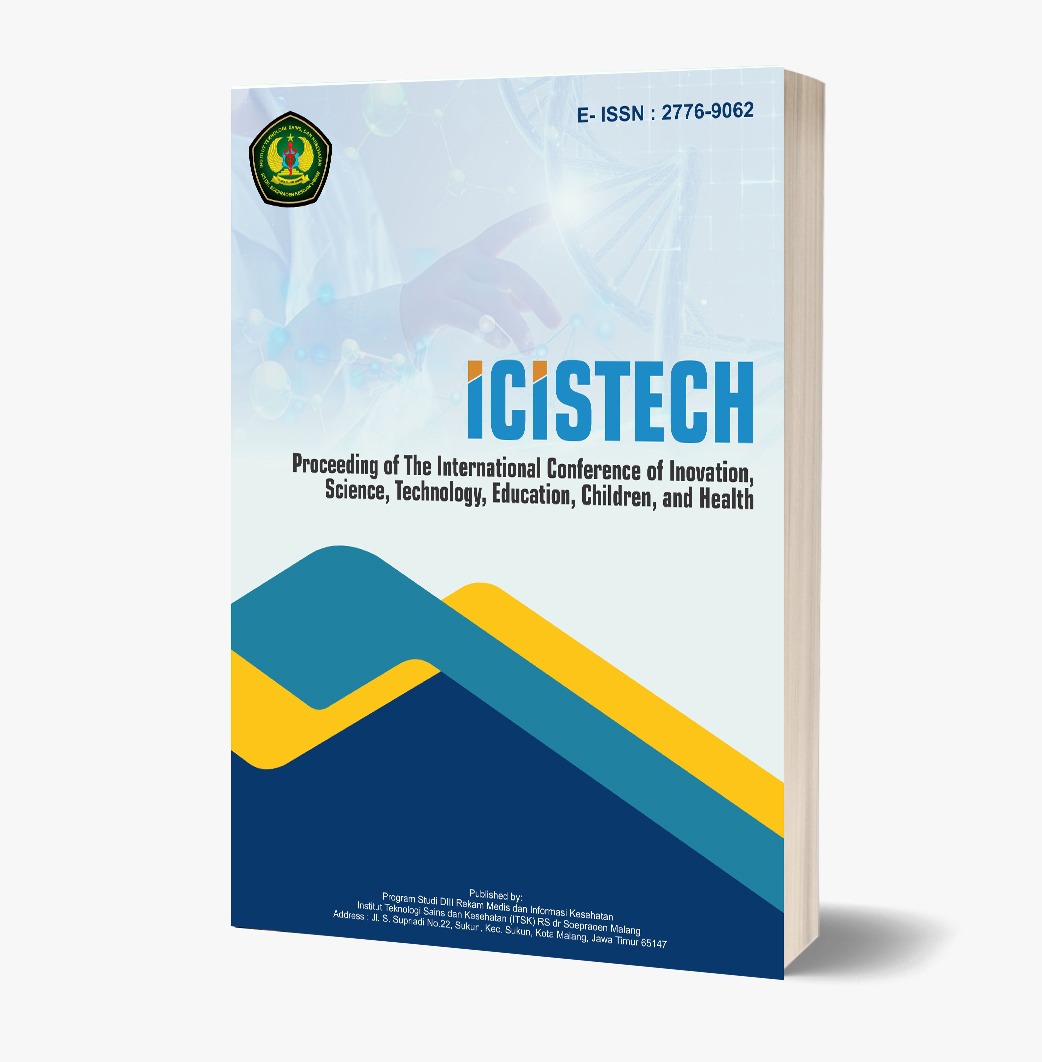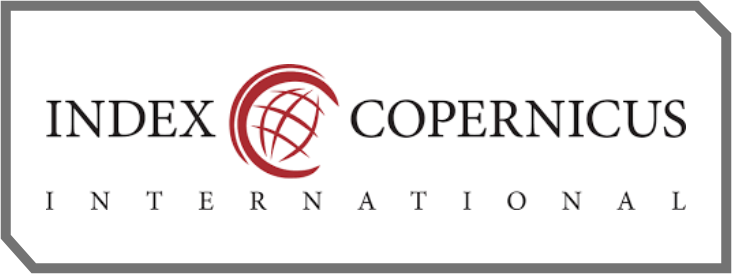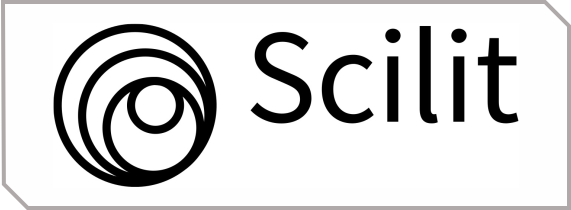Exploring the Connection Between Breastfeeding Practices and Milk Production Levels in New Mothers
DOI:
https://doi.org/10.62951/icistech.v5i1.244Keywords:
Knowledge, Nutritional Status, Toddler StuntingAbstract
The World Health Organization (WHO), UNICEF, and the Ministry of Health strongly advocate for the initiation of breastfeeding within the first hour after birth, exclusive breastfeeding for the first six months, and continued breastfeeding up to two years alongside safe and nutritious complementary feeding. Despite these recommendations, one of the main barriers to achieving exclusive breastfeeding is insufficient breast milk production. This study aimed to investigate the relationship between breastfeeding frequency and milk production adequacy among postpartum mothers. To achieve this, an analytical study with a cross-sectional design was conducted, involving 38 participants. Data was collected through questionnaires that assessed breastfeeding patterns, milk production, and other related factors. The data were analyzed using the Chi-square test to determine any significant associations. The univariate analysis revealed that the majority of postpartum mothers (60.5%) reported irregular breastfeeding patterns, and more than half (55.3%) of the participants stated that they experienced inadequate milk production. Further analysis through bivariate tests showed a significant association between the frequency of breastfeeding and the adequacy of milk production, with a p-value of 0.003. This suggests that mothers who breastfeed more regularly may experience better milk production, which can contribute to healthier infant nutrition. These findings highlight the importance of encouraging regular breastfeeding practices in the early postpartum period to enhance milk supply. Improving awareness and providing support for mothers in establishing a consistent breastfeeding routine could play a crucial role in overcoming challenges related to inadequate milk production and achieving the recommended exclusive breastfeeding practices. Further research may be needed to explore other factors that contribute to successful breastfeeding and milk production.
References
Amalia, D. (2016). Perbedaan dukungan nenek dalam keluarga extended family pada pemberian ASI eksklusif di wilayah kerja Puskesmas Arjasa Kabupaten Jember.
Anggraini Dyah Setiyarini, & Diska Nugraha, N. (2023). Efektivitas pijat oksitosin terhadap pengeluaran ASI pada ibu post partum. Professional Health Journal, 4(2), 268-272. https://doi.org/10.54832/phj.v4i2.367
Aprilia, D., & Krisnawati, A. M. (2019). Faktor-faktor yang mempengaruhi kelancaran pengeluaran ASI pada ibu post partum. Jurnal Ilmiah Kesehatan, 6(1), 1-7. https://doi.org/10.33006/ji-kes.v4i1.162
Asih, I. A., Yuliana, F., & Hidayah, N. (2023). Produksi ASI melalui rooming in pada ibu post sectio caesaria. Jurnal Kebidanan Khatulistiwa, 9(2), 64. https://doi.org/10.30602/jkk.v9i2.1208
Astarani, K., & Idris, D. N. T. (2020). Pengaruh pijat oksitosin terhadap kecukupan air susu ibu pada ibu postpartum. Jurnal Penelitian Keperawatan, 6(1), 35-44. https://doi.org/10.32660/jpk.v6i1.449
Eka, T., Katili, P. S., Arriza, N., Melani, D., Yunus, Y., Gorontalo, U. M., & Prolaktin, K. H. (2024). Hubungan indeks massa tubuh terhadap kadar hormon prolaktin pada ibu nifas 1-2-3. 160-172. https://doi.org/10.31596/jkm.v12i2.2222
Fitria, R., & Yugi, G. (n.d.). Dukungan keluarga dan inisiasi menyusu dini (IMD) dalam keberhasilan pemberian ASI eksklusif. IMD, 20-31.
Kalew, P. A., & Pambudi, W. (2020). Hubungan pemberian ASI eksklusif terhadap perkembangan kognitif bayi usia 3-24 bulan di Puskesmas Grogol Petamburan Jakarta Barat tahun 2019. Tarumanagara Medical Journal, 2(2), 392-398. https://doi.org/10.24912/tmj.v3i1.9747
Khotimah, K., As Satillah, S., Fitriani, V., Miranti, M., Maulida, M., Hasmalena, H., Pagarwati, L. D. A., & Zulaiha, D. (2024). Analisis manfaat pemberian ASI eksklusif bagi ibu menyusui dan perkembangan anak. PAUDIA: Jurnal Penelitian Dalam Bidang Pendidikan Anak Usia Dini, 13(2), 254-266. https://doi.org/10.26877/paudia.v13i2.505
Khusniyati, E. (2025). Pengaruh breastfeeding self-efficacy (BSE) terhadap kelancaran produksi ASI pada ibu nifas di PMB Teta Irayanti, Amd. Keb Desa Plososari Kecamatan Puri. 5, 1682-1692.
Khusniyati, E., & Purwati, H. (2014). Analysis of factors that influence the earnings. 13(1).
Kiptiyah, D. K., Farianingsih, & Rohmatin, H. (2023). Analisis faktor-faktor yang mempengaruhi rendahnya pemberian ASI eksklusif. 8(1), 32-38.
Mulsin, N., Kalsum, Fatmah, F., & Suriah, S. (2019). Faktor yang berhubungan dengan hambatan perilaku pemberian ASI eksklusif di wilayah kerja Puskesmas Anggeraja Kabupaten Enrekang. Jurnal Ilmiah Kesehatan Diagnosis, 14(1), 36-40. https://doi.org/10.35892/jikd.v14i1.92
Pratiwi, E. H., Yuliana, W., & Hikmawati, N. (2024). Hubungan tingkat pendidikan ibu dengan pemberian ASI eksklusif pada bayi usia 7-12 bulan di Desa Cepoko Puskesmas Sumber Kabupaten Probolinggo. ASSYIFA: Jurnal Ilmu Kesehatan, 2(1), 146-158. https://doi.org/10.62085/ajk.v2i1.43
Putri, S. R., & Rahmawati, R. (2021). Efektivitas pijat oksitosin dan aromaterapi lavender terhadap keberhasilan relaktasi pada ibu nifas. Jurnal Ilmu Kesehatan Masyarakat, 10(01), 1-7. https://doi.org/10.33221/jikm.v10i01.782
Sisy Rizkia, P. (2020). Jurnal penelitian perawat profesional pencegahan tetanus. British Medical Journal, 2(5474), 1333-1336.
Ulfa, Z. D., & Setyaningsih, Y. (2020). Tingkat stres ibu menyusui dan pemberian ASI pada bulan pertama. Jurnal Litbang: Media Informasi Penelitian, Pengembangan Dan IPTEK, 16(1), 15-28. https://doi.org/10.33658/jl.v16i1.145
Wati, A. D. C., & Nuzuliana, R. (2021). Manajemen laktasi ibu yang menyusui ASI eksklusif. Journal of Midwifery and Reproduction, 5(1), 20-28.
Wulandari Yuanita, Priyanti Diah, Supatmi Supatmi, & Aviari Vira Aulia. (2021). Studi kasus masalah keperawatan menyusui tidak efektif pada ibu post partum. Indonesian Academia Health Sciences Journal, 2(1), 1-6.
Yulianto, A., Safitri, N. S., Septiasari, Y., & Sari, S. A. (2022). Frekuensi menyusui dengan kelancaran produksi air susu ibu. Jurnal Wacana Kesehatan, 7(2), 68. https://doi.org/10.52822/jwk.v7i2.416
Zahra, T., & Puspitasari, Y. (2024). Faktor-faktor penyebab gagalnya pemberian ASI eksklusif. Jurnal Kesehatan Abdurahman, 13(1), 36-43. https://doi.org/10.55045/jkab.v13i1.194
Downloads
Published
How to Cite
Issue
Section
License
Copyright (c) 2025 Proceeding of The International Conference of Inovation, Science, Technology, Education, Children, and Health

This work is licensed under a Creative Commons Attribution-ShareAlike 4.0 International License.













